Yuanming Tian
Receiver Selection and Transmit Beamforming for Multi-static Integrated Sensing and Communications
Jul 08, 2024Abstract:Next-generation wireless networks are expected to develop a novel paradigm of integrated sensing and communications (ISAC) to enable both the high-accuracy sensing and high-speed communications. However, conventional mono-static ISAC systems, which simultaneously transmit and receive at the same equipment, may suffer from severe self-interference, and thus significantly degrade the system performance.To address this issue, this paper studies a multi-static ISAC system for cooperative target localization and communications, where the transmitter transmits ISAC signal to multiple receivers (REs) deployed at different positions. We derive the closed-form Cram\'{e}r-Rao bound (CRB) on the joint estimations of both the transmission delay and Doppler shift for cooperative target localization, and the CRB minimization problem is formulated by considering the cooperative cost and communication rate requirements for the REs. To solve this problem, we first decouple it into two subproblems for RE selection and transmit beamforming, respectively. Then, a minimax linkage-based method is proposed to solve the RE selection subproblem, and a successive convex approximation algorithm is adopted to deal with the transmit beamforming subproblem with non-convex constraints. Finally, numerical results validate our analysis and reveal that our proposed multi-static ISAC scheme achieves better ISAC performance than the conventional mono-static ones when the number of cooperative REs is large.
Performance Trade-off of Integrated Sensing and Communications for Multi-User Backscatter Systems
Jun 03, 2024Abstract:This paper studies the performance trade-off in a multi-user backscatter communication (BackCom) system for integrated sensing and communications (ISAC), where the multi-antenna ISAC transmitter sends excitation signals to power multiple single-antenna passive backscatter devices (BD), and the multi-antenna ISAC receiver performs joint sensing (localization) and communication tasks based on the backscattered signals from all BDs. Specifically, the localization performance is measured by the Cram\'{e}r-Rao bound (CRB) on the transmission delay and direction of arrival (DoA) of the backscattered signals, whose closed-form expression is obtained by deriving the corresponding Fisher information matrix (FIM), and the communication performance is characterized by the sum transmission rate of all BDs. Then, to characterize the trade-off between the localization and communication performances, the CRB minimization problem with the communication rate constraint is formulated, and is shown to be non-convex in general. By exploiting the hidden convexity, we propose an approach that combines fractional programming (FP) and Schur complement techniques to transform the original problem into an equivalent convex form. Finally, numerical results reveal the trade-off between the CRB and sum transmission rate achieved by our proposed method.
Resonant Beam Communications: A New Design Paradigm and Challenges
Mar 25, 2024

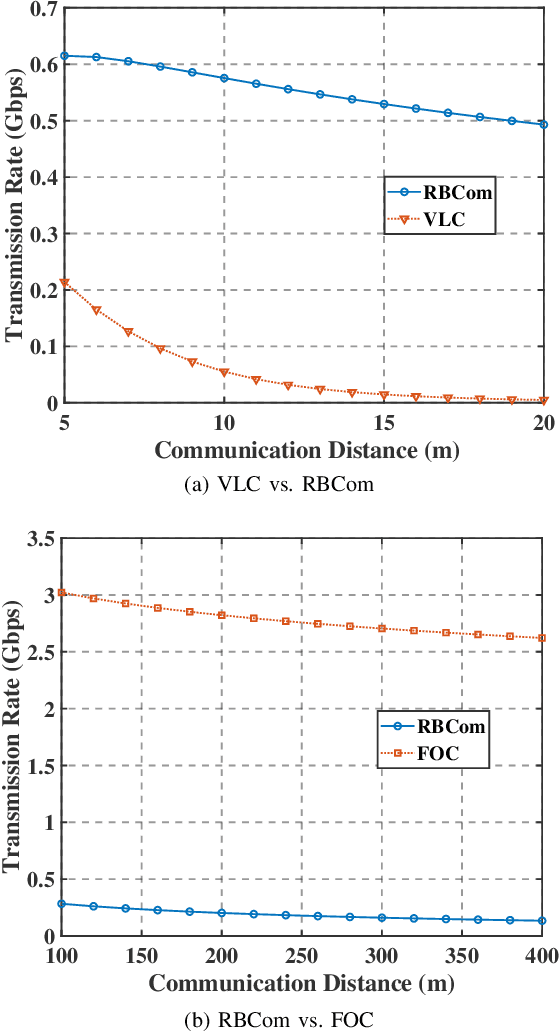

Abstract:Resonant beam communications (RBCom), which adopt oscillating photons between two separate retroreflectors for information transmission, exhibit potential advantages over other types of wireless optical communications (WOC). However, echo interference generated by the modulated beam reflected from the receiver affects the transmission of the desired information. To tackle this challenge, a synchronization-based point-to-point RBCom system is proposed to eliminate the echo interference, and the design for the transmitter and receiver is discussed. Subsequently, the performance of the proposed RBCom is evaluated and compared with that of visible light communications (VLC) and free space optical communications (FOC). Finally, future research directions are outlined and several implementation challenges of RBCom systems are highlighted.
Design and Performance of Resonant Beam Communications -- Part II: Mobile Scenario
Mar 25, 2024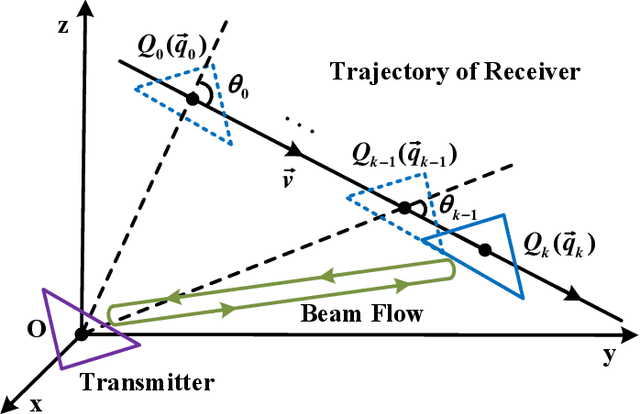
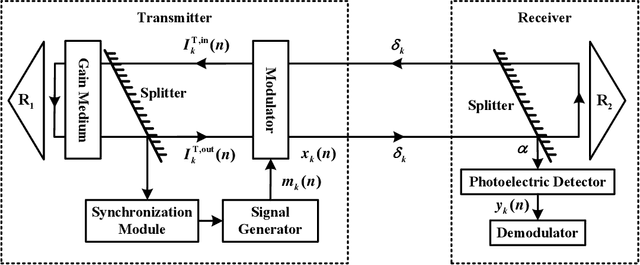
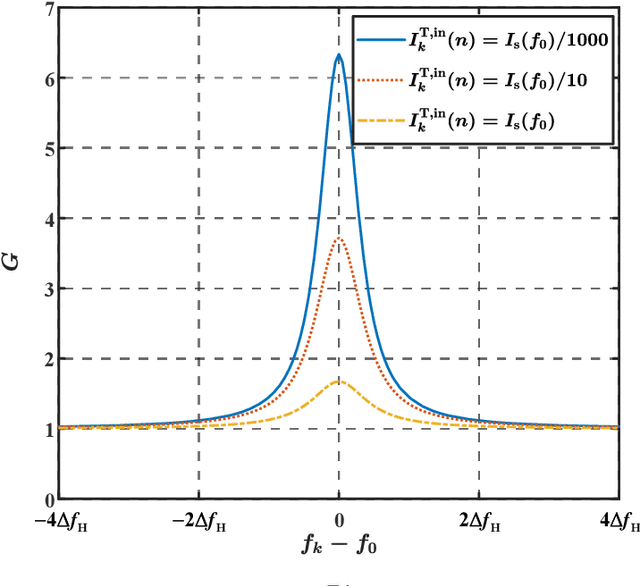
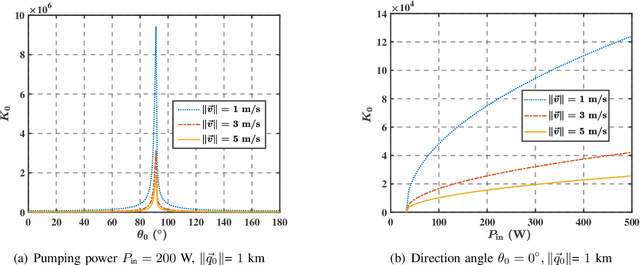
Abstract:This two-part paper focuses on the system design and performance analysis for a point-to-point resonant beam communication (RBCom) system under both the quasi-static and mobile scenarios. Part I of this paper proposes a synchronization-based information transmission scheme and derives the capacity upper and lower bounds for the quasi-static channel case. In Part II, we address the mobile scenario, where the receiver is in relative motion to the transmitter, and derive a mobile RBCom channel model that jointly considers the Doppler effect, channel variation, and echo interference. With the obtained channel model, we prove that the channel gain of the mobile RBCom decreases as the number of transmitted frames increases, and thus show that the considered mobile RBCom terminates after the transmitter sends a certain number of frames without frequency compensation. By deriving an upper bound on the number of successfully transmitted frames, we formulate the throughput maximization problem for the considered mobile RBCom system, and solve it via a sequential parametric convex approximation (SPCA) method. Finally, simulation results validate the analysis of our proposed method in some typical scenarios.
Design and Performance of Resonant Beam Communications -- Part I: Quasi-Static Scenario
Mar 25, 2024



Abstract:This two-part paper studies a point-to-point resonant beam communication (RBCom) system, where two separately deployed retroreflectors are adopted to generate the resonant beam between the transmitter and the receiver, and analyzes the transmission rate of the considered system under both the quasi-static and mobile scenarios. Part I of this paper focuses on the quasi-static scenario where the locations of the transmitter and the receiver are relatively fixed. Specifically, we propose a new information-bearing scheme which adopts a synchronization-based amplitude modulation method to mitigate the echo interference caused by the reflected resonant beam. With this scheme, we show that the quasi-static RBCom channel is equivalent to a Markov channel and can be further simplified as an amplitude-constrained additive white Gaussian noise channel. Moreover, we develop an algorithm that jointly employs the bisection and exhaustive search to maximize its capacity upper and lower bounds. Finally, numerical results validate our analysis. Part II of this paper discusses the performance of the RBCom system under the mobile scenario.
 Add to Chrome
Add to Chrome Add to Firefox
Add to Firefox Add to Edge
Add to Edge